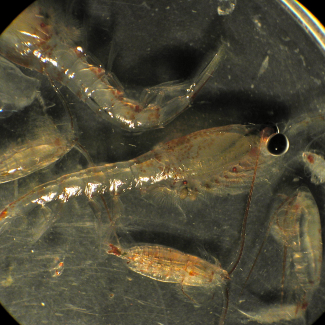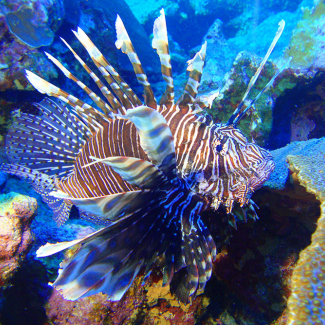Where Do Whale Sharks Fit in the Food Chain
Aquatic food webs
Food webs describe who eats whom in an ecological community. Made of interconnected food chains, food webs help us understand how changes to ecosystems — say, removing a top predator or adding nutrients — affect many different species, both directly and indirectly. Phytoplankton and algae form the bases of aquatic food webs. They are eaten by primary consumers like zooplankton, small fish, and crustaceans. Primary consumers are in turn eaten by fish, small sharks, corals, and baleen whales. Top ocean predators include large sharks, billfish, dolphins, toothed whales, and large seals. Humans consume aquatic life from every section of this food web.
Producers
Primary producers — including bacteria, phytoplankton, and algae — form the lowest trophic level, the base of the aquatic food web. Primary producers synthesize their own energy without needing to eat. Many photosynthesize, using the sun's energy to build carbohydrates. However, some primary producers can create energy without sunlight using chemosynthesis to metabolize chemicals released from hydrothermal vents, methane seeps, and other geological features.

A new study provides insight into how Arctic zooplankton respond to climate change and what it may mean for the ecosystem.
Consumers
Some zooplankton including copepods, rotifers, and larval stages of some fish and invertebrates are grazers and drift through the water grazing on phytoplankton. Larger animals, including some marine snails, fish, reptiles, and mammals, graze on algae. Filter feeders strain their food (plankton and detritus) directly from the water. Filter feeding animals include animals like bivalves, tube worms, sponges, and even large animals like baleen whales and manta rays.
Predators more actively feed on other animals. There are many kinds of predators that feed on many kinds of prey. Pursuit predators like sharks, box jellyfish, sunflower sea stars, and many fish like herring, cod, and tuna hunt for their prey. Ambush predators like mantis shrimp, some octopuses, some eels, and scorpionfish, capture their prey by hiding and suddenly attacking. Animals that have few or no predators of their own are called top predators. These include killer whales, leopard seals, large sharks, sunflower sea stars, marlin, and other highly migratory species.

Lionfish have become the poster child for invasive species issues in the western north Atlantic region.
Scavengers
But what happens when something dies without being eaten? The uneaten organisms and animal parts that are not consumed during feeding sink to the bottom, where they may be eaten by bottom-dwelling scavengers, like many crabs and lobsters. Organic material that remains is decomposed by bacteria and the resulting waste becomes nutrients usable by producers. When a whale dies, an entire ecosystem pops up to consume the sudden food source.
Opportunistic feeders
Many consumers are opportunistic feeders, meaning they may eat anywhere within the food web and may be a combination of any of the types described here. Sometimes they even eat each other.

If they successfully invade Lake Erie, Asian carp could eventually account for about a third of the total weight of fish in the lake and could cause declines in most fish species — including prized sport and commercial fish.
Ecosystem effects
Complex food webs support diverse ecosystems. If one type of prey becomes scarce, a predator might switch to consuming more of another species it eats. However, changes in one part of the food web may cause a trophic cascade that affects organisms across multiple trophic levels. For instance, removing a top predator may cause its prey to become more abundant, as fewer individuals are eaten. But with more prey around, the organisms that it eats may become scarcer. Seemingly simple changes can have complex effects, with direct and indirect interactions rippling throughout entire ecosystems.
Humans and aquatic food webs
Humans play an important role as one of the top predators in these food webs. It is our responsibility to ensure that our fisheries are sustainable and that we are not polluting the ocean with toxins that bioaccumulate in food webs.
EDUCATION CONNECTION
Education plays an important role in the health of our aquatic food webs. Whether students live inland or on the coasts, their actions affect the health of one of our major food sources. This collection contains a variety of multimedia, lesson plans, data, activities, and information to help students better understand the interconnectedness of food webs and the role of humans in that web.
Where Do Whale Sharks Fit in the Food Chain
Source: http://www.noaa.gov/education/resource-collections/marine-life/aquatic-food-webs
0 Response to "Where Do Whale Sharks Fit in the Food Chain"
Post a Comment